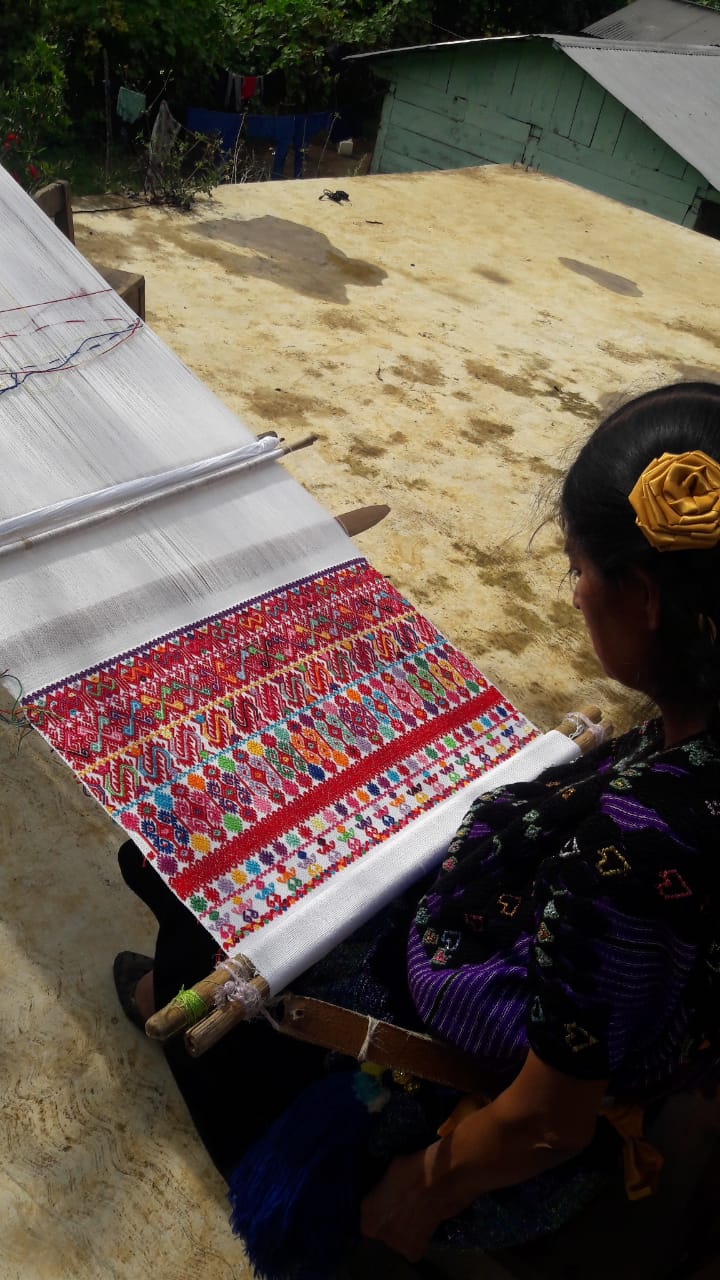In July, we told you in a blog post about the University Museum’s collaboration with Weaving for Justice to commission a saint’s ensemble created by weavers of the Tsobol Antsetik cooperative. Since then, we’ve made progress on the project both here in Las Cruces and in Chiapas.
Collections Research
One of our concerns when we started the project (both here at the University Museum and in the Tsobol Antsetik cooperative) was how to identify design details. The saint that inspired this project is Santa María Magdalena, as pictured by photographer Janet Schwartz in the township of Magdalenas in 2010 (see below).

Normally, the women involved in weaving the huipil and rebozo (shawl) would travel to Magdalenas to study the huipil’s designs and learn from them before beginning. Although close by, the roads between Chenalhó and Magdalenas have proved unsafe recently due paramilitary activity in the area. The COVID-19 pandemic and lack of vaccine access in Chiapas further increases the dangers of travel between townships. Consequently, the weavers like Juana María Arias Pérez, who is responsible for weaving the main saint’s huipil, are unable to see the designs in person.

However, the Museum of International Folk Art (MOIFA) in Santa Fe has an older saint’s huipil from Magdalenas in their collection (FA 1988.79.3). Thanks to the help of the MOIFA collections team and Curator of Textiles Carrie Hertz, University Museum Curator Kristin Otto travelled to MOIFA in August to examine the saint’s huipil and take detailed photographs of the designs. This saint’s huipil dated to the 1980s and incorporated wool thread into the brocade. In comparison, the photo we had been basing our commission on was much newer and used brightly colored synthetic threads. In conversation with the teams in both Las Cruces and Chiapas, we decided to refrain from drawing directly from the MOIFA saint’s huipil designs, and instead rely upon the choices of the weavers in Tsobol Antsetik.



